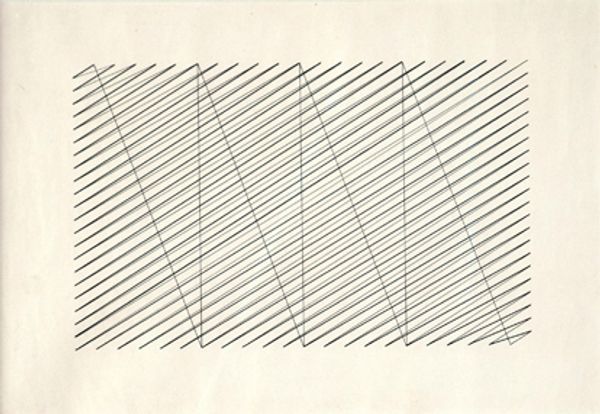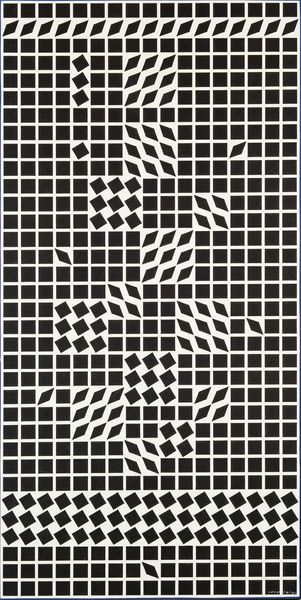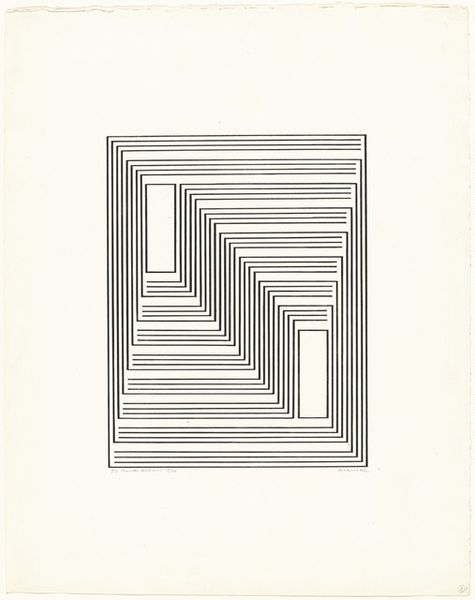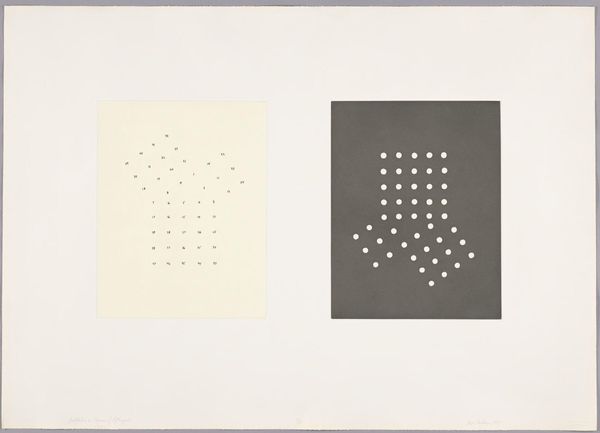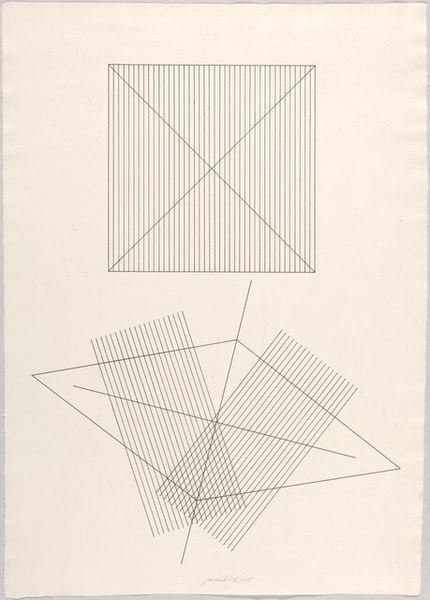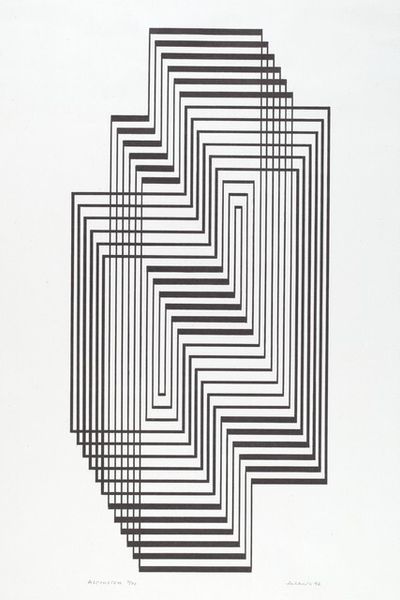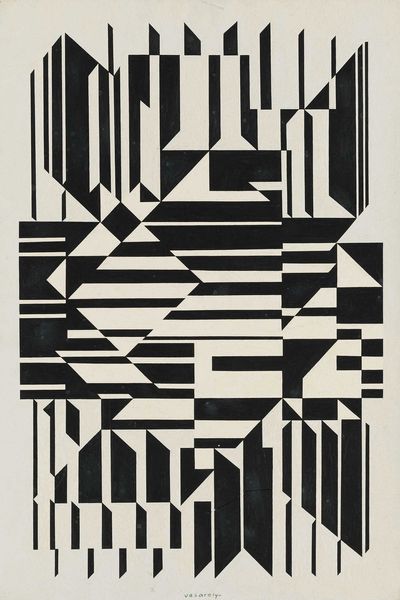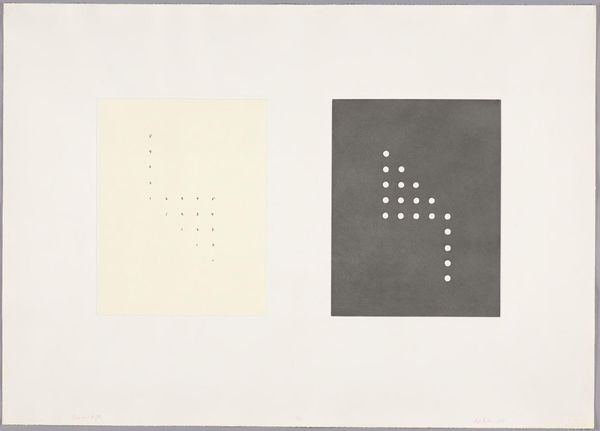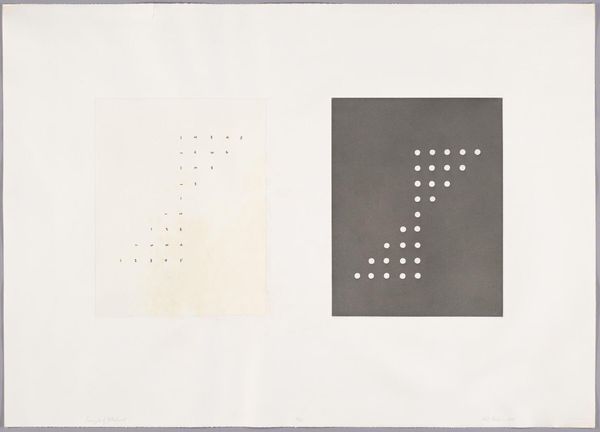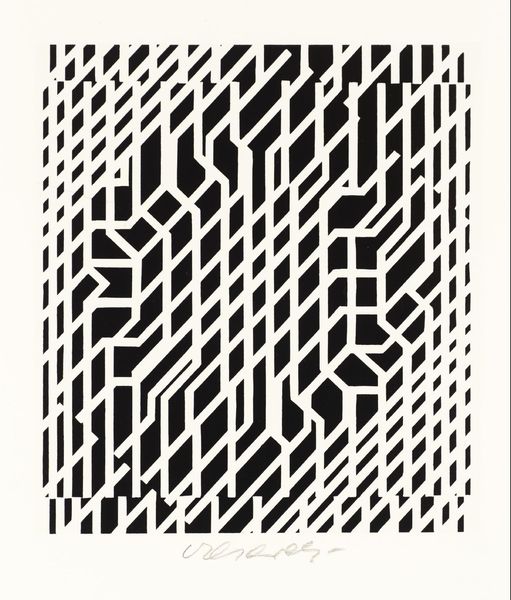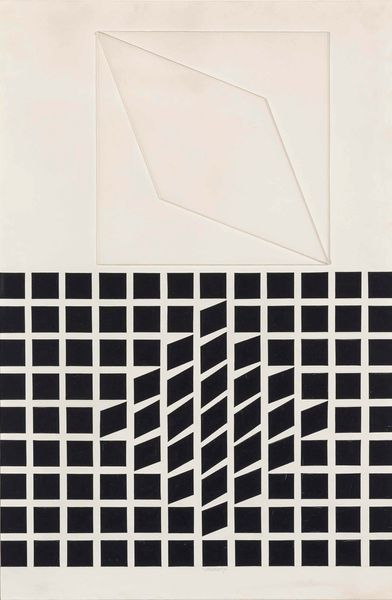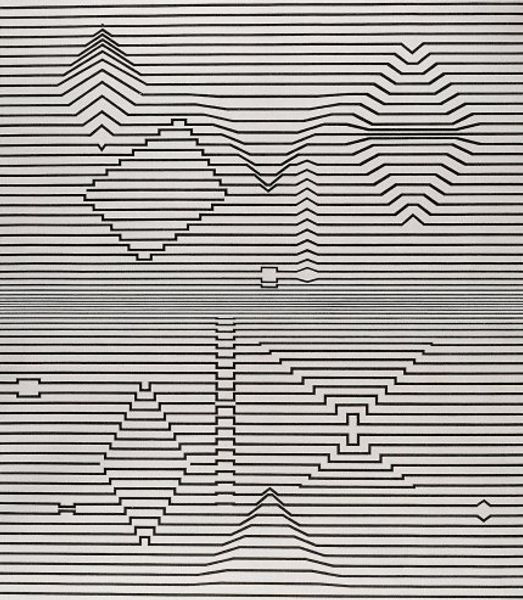
#
op-art
# print
#
abstract
#
geometric
#
geometric-abstraction
#
line
Copyright: Modern Artists: Artvee
Editor: Here we have Victor Vasarely's "Ilile" from 1962, a print dominated by strong diagonal lines. The black and white contrast is really striking. What do you see in this piece? Curator: I see a visual representation of social disruption and the potential for new orders. Consider the sociopolitical landscape of 1962. This artwork echoes a world grappling with Cold War tensions and the Civil Rights Movement, yes? The stark black and white can be seen as symbolizing binary oppositions – power versus oppression. What do you think of that reading? Editor: I hadn't considered it in that light! So, the lines, are they like systems being questioned or redrawn? Curator: Precisely! Vasarely, consciously or unconsciously, taps into that era’s questioning of established structures. The zigzag patterns disrupt the linear, hinting at societal fault lines, struggles and the desire to break free from restrictive norms. Can you see this linking with intersectional identities? Editor: Absolutely! Now I see how the disrupting zigzags reflect the fight against traditional societal structures, like gender roles. Curator: Exactly, think of feminist and civil rights activists working tirelessly to deconstruct norms! “Ilile” becomes not just an aesthetic experience, but a powerful commentary. What about the ordering that could follow these disruptions? Editor: Right, there is order too, as though these social forces could lead to stability in a new, modern design for living. I've never seen Op Art this way! Curator: That is how art history, contemporary theory, philosophy and feminist insights can create a new and more meaningful relationship between us and the works that define our culture.
Comments
No comments
Be the first to comment and join the conversation on the ultimate creative platform.
